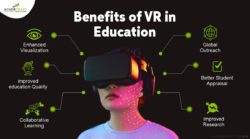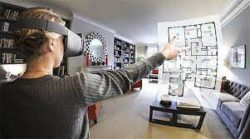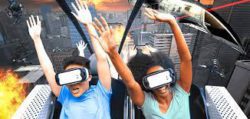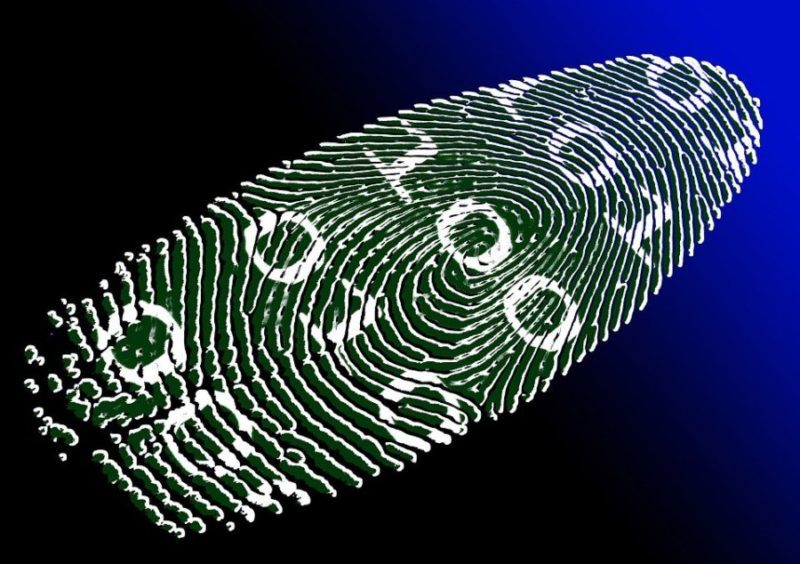Virtual Reality Industries: Top 10 Industries Using VR
Virtual Reality (VR) Industries play a crucial role in shaping the development and implementation of the Metaverse. The Metaverse refers to a virtual universe where users can interact with a computer-generated environment and other users in real-time. It is an immersive and interconnected digital realm that combines elements of virtual reality, augmented reality, and the internet.
VR Industries are at the forefront of creating the immersive experiences that are central to the Metaverse. Through VR technology, users can enter a fully simulated environment that replicates the real world or offers fantastical realms limited only by human imagination. By wearing a VR headset and utilizing motion-tracking devices, users can feel a sense of presence and engage with the virtual environment as if they were physically there.
In the context of the Metaverse, VR Industries are responsible for developing the hardware, software, and content that enable users to access and participate in this virtual universe. They strive to create seamless, realistic, and immersive experiences that blur the line between the physical and digital realms. The aim is to make users feel fully present and engaged within the Metaverse, facilitating a sense of social interaction, exploration, and entertainment.
One of the key aspects of VR Industries’ involvement in the Metaverse is the creation of virtual worlds or environments. These virtual worlds can range from realistic simulations of real-world locations to entirely fictional and imaginative landscapes. VR Industries employ 3D modeling, graphics rendering, and physics simulations to design visually stunning and interactive virtual spaces.
Additionally, VR Industries contribute to the development of social interaction within the Metaverse. By integrating social features into VR experiences, users can connect and communicate with each other in real-time, enabling shared experiences and collaborative activities. Virtual reality avatars allow users to represent themselves in the virtual world, offering a personalized presence and enhancing the social aspect of the Metaverse.
The integration of VR into the Metaverse also opens up new avenues for entertainment and media consumption. VR Industries develop immersive gaming experiences that take advantage of the Metaverse’s interconnected nature. Users can engage in multiplayer games, explore virtual theme parks, attend virtual concerts, or participate in virtual sports events, all within the Metaverse. This convergence of virtual reality, entertainment, and social interaction provides a rich and diverse range of experiences for users.
Moreover, VR Industries play a vital role in driving innovation and technological advancements within the Metaverse. They invest in research and development to enhance the realism, interactivity, and accessibility of VR technology. This includes improving hardware capabilities, such as higher-resolution displays, better motion tracking, and more comfortable and lightweight headsets. Advancements in haptic feedback systems and sensory stimulation further contribute to creating immersive experiences within the Metaverse.
In terms of software, VR Industries develop applications and platforms that enable users to access the Metaverse and interact with its various elements. They create virtual marketplaces for users to discover, purchase, and personalize virtual assets, such as clothing, accessories, and virtual real estate. These virtual economies drive entrepreneurship and offer opportunities for creators to monetize their digital creations.
Privacy, security, and ethical considerations are also paramount for VR Industries in the context of the Metaverse. They must ensure user data protection, prevent unauthorized access, and address issues such as harassment, fraud, and virtual property rights. Building trust and establishing standards for responsible use of VR technology within the Metaverse are crucial to its long-term success and adoption.
In conclusion, VR Industries play a pivotal role in shaping the Metaverse by creating immersive experiences, developing virtual worlds, enabling social interaction, driving innovation, and ensuring ethical practices. Their efforts contribute to the realization of a fully immersive, interconnected virtual universe where users can explore, interact, and engage with others, blurring the boundaries between physical and digital realities.
What is Extended Reality?
Extended Reality (XR) is an umbrella term that encompasses various immersive technologies, including Virtual Reality (VR), Augmented Reality (AR), and Mixed Reality (MR). XR refers to the spectrum of experiences that merge the real world with virtual elements, creating a new digital environment that enables users to interact and engage with digital content in more profound and meaningful ways.
1. Virtual Reality (VR): VR is a technology that immerses users in a fully simulated digital environment, completely separate from the real world. By wearing a VR headset, users are visually and audibly transported to a virtual world, allowing them to experience a sense of presence and interaction within that digital realm. VR replaces the user’s real-world environment with a computer-generated alternative, providing a heightened level of immersion.
2. Augmented Reality (AR): AR overlays digital elements onto the user’s view of the real world. Unlike VR, which completely replaces the real world, AR enhances the real-world environment by adding computer-generated graphics, text, or objects. AR is typically experienced through devices such as smartphones, tablets, or AR glasses, which use cameras and sensors to detect and augment the user’s surroundings with digital information.
3. Mixed Reality (MR): MR combines elements of both VR and AR to create a more seamless blend of the real and virtual worlds. MR allows virtual objects to interact with the real environment and vice versa, providing users with the ability to manipulate and interact with both digital and physical elements simultaneously. MR is often experienced through specialized headsets like Microsoft HoloLens or Magic Leap, which enable users to see and interact with virtual objects superimposed onto the real world.
The key concept behind XR is to create a sense of presence and immersion, enabling users to feel as if they are part of a digital environment or have digital elements seamlessly integrated into their real-world surroundings. XR technologies have numerous applications across various industries, including entertainment, gaming, education, healthcare, architecture, engineering, and more.
In the entertainment and gaming industry, XR technologies offer immersive and interactive experiences, allowing users to explore virtual worlds, play games, and engage in simulated environments. XR can transport users to virtual environments, enabling them to experience unique adventures, visit historical sites, or participate in virtual events and performances.
In the education sector, XR provides new opportunities for immersive learning experiences. Students can visualize complex concepts, interact with 3D models, and explore virtual environments that bring subjects to life. XR technologies enhance engagement and retention, making learning more interactive and enjoyable.
In healthcare, XR has transformative potential. Surgeons can use AR to overlay medical information and visualization directly onto the patient during operations, enhancing precision and reducing risks. VR is utilized for pain management, phobia treatment, rehabilitation, and creating realistic medical simulations for training healthcare professionals.
Architecture and engineering benefit from XR by enabling immersive design reviews, visualizing structures at scale, and facilitating collaborative design processes. XR technologies help architects and engineers visualize their designs in 3D, analyze spatial relationships, and identify potential issues before construction begins.
It’s worth noting that XR is a rapidly evolving field, and advancements in hardware, software, and content creation tools continue to drive its growth. As technology progresses, XR experiences become more immersive, realistic, and accessible to a broader audience. The ability to seamlessly blend the physical and digital realms holds great potential for transforming various industries and revolutionizing the way we interact with digital content.
What is virtual Reality?
Virtual Reality (VR) refers to a technology that creates an artificial, computer-generated environment that simulates a realistic sensory experience for users. It immerses individuals in a simulated world, typically through the use of a VR headset or goggles, allowing them to interact with and explore a virtual environment as if they were physically present.
Key components of Virtual Reality include:
1. VR Headset: A VR headset is a device worn on the head that provides visual and auditory immersion into the virtual environment. It typically consists of a screen or screens placed close to the user’s eyes, providing a wide field of view. The headset may also have built-in headphones or speakers to deliver spatial audio, enhancing the sense of immersion.
2. Tracking Systems: To enable users to move and interact within the virtual environment, VR systems incorporate tracking technologies. These systems track the user’s head movements and sometimes the movements of other body parts, allowing the virtual world to respond in real-time. This tracking is typically achieved through sensors, cameras, or motion-tracking devices.
3. Controllers and Input Devices: VR experiences often require interaction with the virtual environment. Specialized controllers or input devices, such as handheld motion controllers or gloves, enable users to manipulate objects, navigate through the virtual space, and perform actions within the simulated environment. These devices provide haptic feedback, enhancing the sense of touch and realism.
4. Virtual Environment: The virtual environment in VR is a computer-generated simulation that can replicate real-world settings or create entirely fictional and imaginative worlds. It may include realistic landscapes, objects, characters, and interactive elements. The environment can be designed to provide a wide range of experiences, such as exploring new places, gaming, training simulations, or social interactions.
How Virtual Reality works:
When a user wears a VR headset, the device displays stereoscopic images, meaning two slightly different images, one for each eye, to create a sense of depth. This illusion of depth helps create the immersive feeling of being in a 3D environment. The headset may also employ head tracking to detect the user’s head movements, updating the displayed images accordingly to maintain the user’s perspective within the virtual world.
Additionally, VR systems use spatial audio technologies to provide realistic soundscapes. By simulating sounds coming from different directions, the virtual environment can create a sense of presence and spatial awareness.
Applications of Virtual Reality:
Virtual Reality has a wide range of applications across various industries:
1. Gaming and Entertainment: VR gaming provides highly immersive experiences, allowing players to interact with virtual worlds, explore new environments, and engage in realistic simulations of various activities.
2. Training and Simulation: VR is used in fields such as aviation, military, healthcare, and emergency services to provide realistic training scenarios, allowing individuals to practice and learn in a safe and controlled environment.
3. Education and Learning: VR can enhance education by creating interactive and immersive learning experiences. Students can explore historical sites, travel to distant locations, or visualize complex concepts in a more engaging and interactive way.
4. Architecture and Design: VR allows architects, engineers, and designers to visualize and experience their creations in a 3D environment before they are built. This enables better spatial understanding, identifying design flaws, and improving communication with clients.
5. Healthcare and Therapy: VR has been used for pain management, exposure therapy for phobias, physical rehabilitation, and even as a tool for relaxation and stress reduction.
6. Virtual Tourism and Exploration: VR enables users to virtually visit destinations they may not be able to reach physically, providing immersive experiences and promoting tourism.
As VR technology continues to advance, it holds significant potential for transforming industries, enhancing user experiences, and pushing the boundaries of human interaction with virtual environments.
Global crypto exchange Binance has strategically included Floki Inu, the popular meme coin, in its Metaverse and Gaming categories, paving the way for widespread acceptance and usage of the crypto in the virtual reality and digital entertainment industries. Despite this, the…
— Bitprismia (@bitprismia) June 18, 2023
Difference between Augmented Reality, Mixed Reality and Virtual Reality
Augmented Reality (AR), Mixed Reality (MR), and Virtual Reality (VR) are distinct technologies that offer different levels of immersion and interaction with the virtual world. While they all fall under the umbrella of immersive technologies, understanding their differences is essential. Here’s an in-depth look at each technology:
1. Augmented Reality (AR):
Augmented Reality overlays virtual elements onto the real world, enhancing our perception and interaction with the environment. AR technology utilizes devices like smartphones, tablets, smart glasses, or headsets equipped with cameras, sensors, and displays. The key characteristics of AR are:
– Real-world integration: AR preserves the user’s connection to the physical world by overlaying digital content onto the real environment. Users can see and interact with both real and virtual objects simultaneously.
– Contextual information: AR provides additional information, graphics, or interactive elements that are contextually relevant to the user’s surroundings. For example, pointing a smartphone at a building can display information about its history or nearby restaurants.
– Examples: Pokémon Go, Snapchat filters, AR-based navigation apps.
2. Mixed Reality (MR):
Mixed Reality combines elements of both virtual reality and augmented reality, allowing virtual objects to interact with the real world in real-time. MR experiences are typically delivered through headsets, like Microsoft HoloLens, which blend virtual and real-world content seamlessly. The key characteristics of MR are:
– Virtual-Real integration: MR devices provide a transparent display, enabling users to view and interact with virtual objects while still seeing and interacting with the real world.
– Spatial mapping: MR systems map the physical environment in real-time, enabling virtual objects to be precisely placed and anchored to specific locations or surfaces.
– Examples: Microsoft HoloLens, Magic Leap, spatial computing applications.
3. Virtual Reality (VR):
Virtual Reality completely immerses users in computer-generated environments, creating a sense of presence and detachment from the physical world. VR experiences typically require head-mounted displays (HMDs), such as Oculus Rift or HTC Vive, to block out the real world and replace it with a virtual one. The key characteristics of VR are:
– Full immersion: VR aims to transport users to entirely virtual environments, shutting out the physical world. Users perceive and interact with the digital world as if it were their reality.
– Head tracking: VR systems track the user’s head movements to update the perspective of the virtual environment, allowing users to look around and explore the virtual world in a natural manner.
– Examples: Oculus Rift, HTC Vive, immersive gaming experiences.
Key Differences:
1. Immersion Levels: VR offers the highest level of immersion, fully replacing the real world with a virtual one. MR blends virtual and real elements, while AR overlays virtual content onto the real world without fully replacing it.
2. Real-world Interaction: AR allows users to interact with real-world objects and people while overlaying virtual elements. MR also enables interaction with real-world objects, but virtual objects can respond and interact with the real environment. In VR, users interact solely with virtual objects and environments.
3. Device Requirements: AR experiences can be accessed through devices like smartphones or smart glasses, while MR typically requires specialized headsets with transparent displays. VR necessitates dedicated headsets that fully block out the real world.
4. Use Cases: AR finds applications in gaming, advertising, navigation, and real-time information overlay. MR has uses in architecture, design, education, and collaborative workspaces. VR is popular in gaming, simulations, training, and virtual tours.
While AR, MR, and VR share the goal of immersive experiences, they differ in the degree of immersion, interaction with the real world, and the technology used to deliver those experiences. Each technology has its unique strengths and applications, catering to different use cases and user requirements.
Also read: Importance Of Virtual Reality And Its 3 Main Forms
Experiencing VR through virtual reality headsets
Experiencing Virtual Reality (VR) through virtual reality headsets is a captivating and immersive journey into computer-generated worlds. VR headsets are the primary interface that enables users to step into these virtual environments and engage with them in a realistic and interactive manner. Let’s explore in detail how VR headsets enhance the VR experience:
1. Visual Immersion: VR headsets feature high-resolution displays positioned close to the user’s eyes, creating a wide field of view. These displays render stereoscopic images, presenting slightly different images to each eye to create a 3D effect and depth perception. This visual immersion makes users feel as if they are present within the virtual environment, enhancing realism and engagement.
2. Head Tracking: VR headsets incorporate sensors to track the user’s head movements, allowing the virtual world to respond accordingly. This head tracking ensures that the user’s perspective within the virtual environment changes in real-time as they move their head. It enables a natural and intuitive way of looking around and exploring the virtual surroundings.
3. Audio Integration: Sound plays a crucial role in creating a fully immersive experience. VR headsets often have built-in headphones or spatial audio technology that delivers 3D audio, simulating sound from different directions. This spatial audio enhances the sense of presence and immersion, as users can identify sounds coming from specific locations within the virtual environment.
4. Input Devices: VR headsets are typically used in conjunction with input devices that enable users to interact with the virtual world. These devices can include handheld controllers, gloves, or even full-body tracking suits. These input devices provide haptic feedback, allowing users to touch and manipulate virtual objects, navigate the virtual space, and perform actions within the virtual environment. This interaction enhances the sense of presence and realism.
5. Comfort and Ergonomics: VR headset manufacturers pay attention to comfort and ergonomics to ensure an enjoyable and comfortable experience. Modern headsets are designed with adjustable straps, padding, and weight distribution to minimize discomfort during prolonged use. This allows users to fully immerse themselves in the VR experience without distractions or discomfort.
6. Tracking Systems: VR headsets often rely on external tracking systems to accurately capture the user’s position and movements. These tracking systems can use external cameras, infrared sensors, or laser-based technologies to detect the position and orientation of the user within the physical space. This tracking enables users to move around in the virtual environment, providing a more immersive and interactive experience.
7. Content and Software Compatibility: VR headsets are compatible with various content and software applications designed specifically for VR experiences. These applications can range from immersive games and virtual tours to educational simulations and training programs. VR headset manufacturers often provide their own app stores or platforms where users can access and download VR content.
Virtual reality headsets have transformed the way users engage with digital content, providing a level of immersion and interactivity that was previously unimaginable. By creating a seamless connection between the user and the virtual environment, VR headsets transport individuals to new worlds, facilitate exploration, and offer unique experiences across gaming, entertainment, education, training, and more. As technology advances, VR headsets continue to improve in terms of resolution, field of view, tracking accuracy, and comfort, promising even more immersive and realistic experiences in the future.
Also read: Top 9 Industries Making Creative Use Of Virtual Reality
Top 10 Virtual Reality Industries benefiting from VR technology
Virtual reality (VR) is a technology that allows users to experience a simulated environment. VR headsets are worn on the head and display a 360-degree view of the environment. This technology has the potential to revolutionize many industries, and it is already being used in a variety of ways.
Here are the top 10 industries benefiting from VR technology:
- Automotive. VR is being used by automotive companies to design and test cars. Engineers can use VR to simulate driving in different environments, such as city streets, highways, and off-road terrain. This helps them to identify potential problems with the design of the car and to make changes before the car is built. VR is also being used to train drivers. Drivers can use VR to practice driving in a variety of situations, such as inclement weather or on busy roads. This helps them to improve their skills and to become safer drivers.
- Healthcare. VR is being used in healthcare to provide training, education, and therapy. For example, VR is being used to train surgeons on how to perform complex procedures. VR is also being used to treat phobias and other mental health conditions. VR can also be used to provide pain relief and to help patients with rehabilitation.
- Education. VR is being used in education to provide students with a more immersive and interactive learning experience. For example, VR can be used to take students on virtual field trips to historical sites or to allow them to experiment with different scientific concepts. VR can also be used to provide students with personalized learning experiences.
- Retail. VR is being used by retailers to allow customers to virtually try on clothes, shoes, and other products. VR can also be used to create immersive shopping experiences, such as virtual showrooms. This helps retailers to increase sales and to provide a better customer experience.
- Tourism. VR is being used by tourism companies to allow people to virtually visit different destinations. This helps people to plan their trips and to experience different cultures without having to leave home. VR can also be used to create educational experiences, such as virtual tours of historical sites.
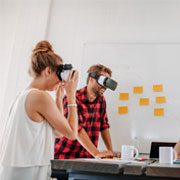
- Real estate. VR is being used by real estate agents to allow potential buyers to virtually tour properties. This helps buyers to get a better sense of the property and to make an informed decision about whether or not to buy it. VR can also be used to create 3D models of properties, which can be used for marketing purposes.
- Military. VR is being used by the military to train soldiers and to simulate combat situations. VR can also be used to provide soldiers with a better understanding of the battlefield and to help them to make better decisions in combat. VR is also being used to treat post-traumatic stress disorder (PTSD) in veterans.
- Media and entertainment. VR is being used by the media and entertainment industry to create new and immersive experiences. For example, VR is being used to create 360-degree videos and to produce virtual reality games. VR is also being used to create new forms of art and to provide people with a new way to experience the world.
- Sports. VR is being used by the sports industry to provide fans with a more immersive experience. For example, VR is being used to allow fans to watch games from different perspectives, such as from the stands or from the field. VR is also being used to create training tools for athletes.
- Other industries. VR is also being used in a variety of other industries, such as manufacturing, engineering, and customer service. VR has the potential to revolutionize many industries, and it is still in its early stages of development. As VR technology continues to improve, we can expect to see even more industries benefit from this technology.
Stay informed with daily updates from Blockchain Magazine on Google News. Click here to follow us and mark as favorite: [Blockchain Magazine on Google News].
Get Blockchain Insights In Inbox
Stay ahead of the curve with expert analysis and market updates.
latest from tech
Disclaimer: Any post shared by a third-party agency are sponsored and Blockchain Magazine has no views on any such posts. The views and opinions expressed in this post are those of the clients and do not necessarily reflect the official policy or position of Blockchain Magazine. The information provided in this post is for informational purposes only and should not be considered as financial, investment, or professional advice. Blockchain Magazine does not endorse or promote any specific products, services, or companies mentioned in this posts. Readers are encouraged to conduct their own research and consult with a qualified professional before making any financial decisions. The featured image used is just a creative depiction of the title and it does not intend to hurt sentiments of any person or institution. If it hurts anyone sentiments, please do not hesitate to reach out to Blockchain Magazine.

 Bitcoin
Bitcoin  Ethereum
Ethereum  XRP
XRP  Tether
Tether  Solana
Solana  Dogecoin
Dogecoin  USDC
USDC  Cardano
Cardano  Lido Staked Ether
Lido Staked Ether  TRON
TRON  Chainlink
Chainlink  Avalanche
Avalanche  Wrapped stETH
Wrapped stETH  Sui
Sui  Wrapped Bitcoin
Wrapped Bitcoin  Stellar
Stellar  Toncoin
Toncoin  Hedera
Hedera  Shiba Inu
Shiba Inu  Polkadot
Polkadot  WETH
WETH  LEO Token
LEO Token  Bitcoin Cash
Bitcoin Cash  Litecoin
Litecoin  Hyperliquid
Hyperliquid  Bitget Token
Bitget Token  Official Trump
Official Trump  Uniswap
Uniswap  Pepe
Pepe  Wrapped eETH
Wrapped eETH  USDS
USDS  NEAR Protocol
NEAR Protocol  Ethena USDe
Ethena USDe  Aave
Aave  Aptos
Aptos  Internet Computer
Internet Computer  Ondo
Ondo  WhiteBIT Coin
WhiteBIT Coin  Ethereum Classic
Ethereum Classic  Cronos
Cronos  Monero
Monero  Mantle
Mantle  POL (ex-MATIC)
POL (ex-MATIC)  Render
Render  Dai
Dai  Algorand
Algorand  Bittensor
Bittensor  MANTRA
MANTRA 


